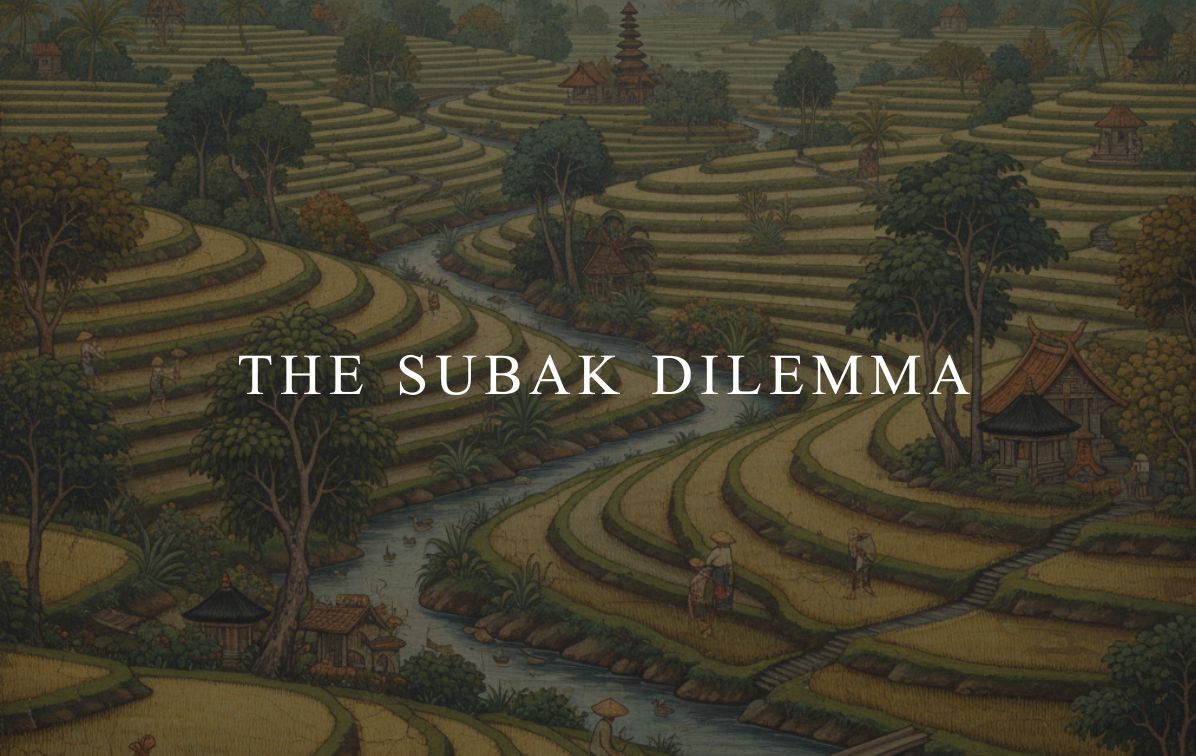What is Biophilic Design and Why is it Perfect for Bali?
Discover how biophilic design in Bali connects architecture with nature, creating villas that are more than homes. It’s a whole mood, a return to tranquility.
.jpg)
A biophilic villa in Bali is basically a home designed to feel like a seamless part of the island's incredible nature, using natural light, materials, and greenery to boost your wellbeing and reconnect you with something essential.
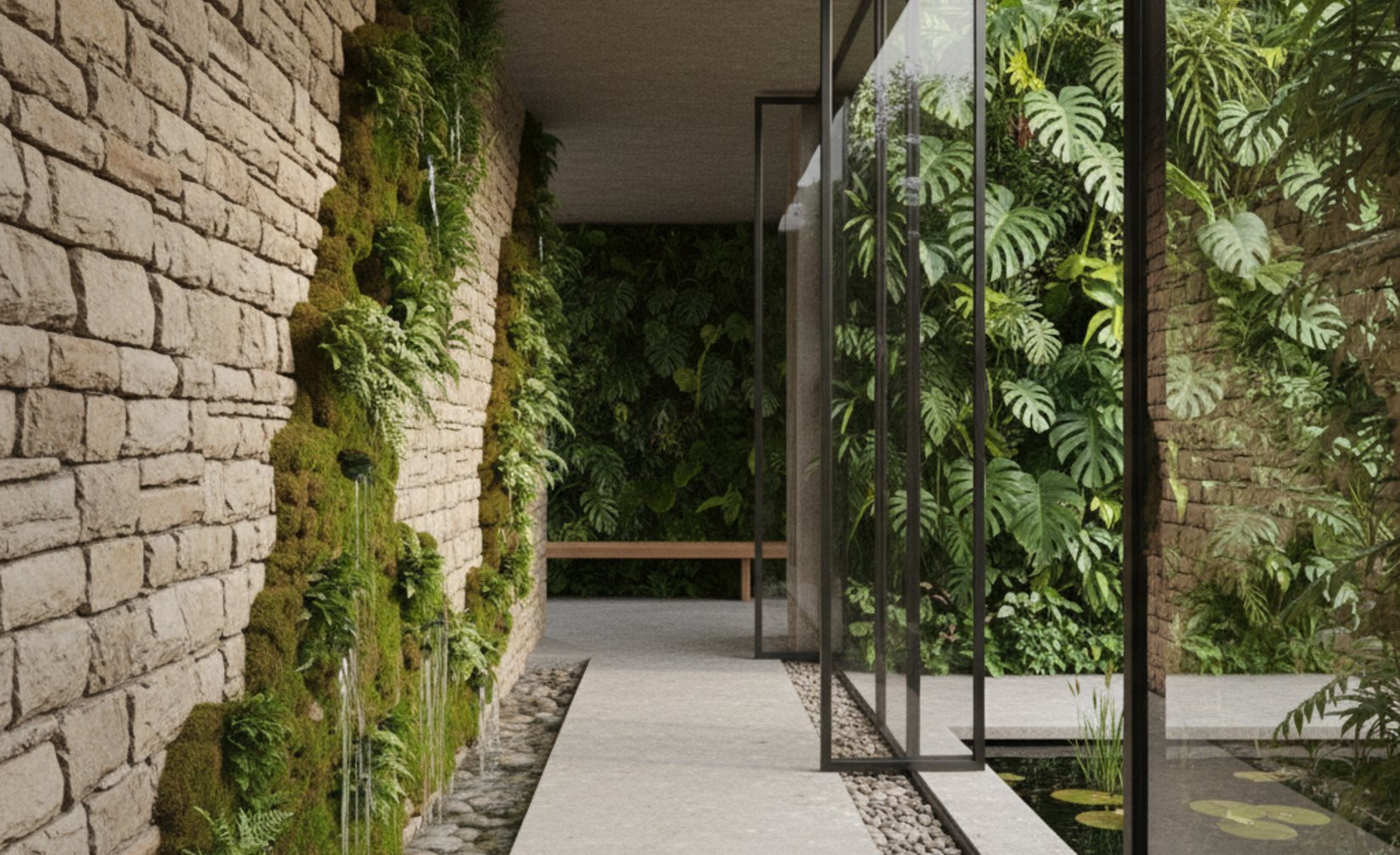
So, what’s this biophilic thing anyway?
Right, let's get into it. The term sounds a bit... academic, doesn't it? Biophilic. But the idea behind it is actually ancient and super intuitive. It’s all about our innate, almost primal, need to connect with nature. Think about it, we feel better when we’re outside, right? A walk in the forest, the sound of the ocean… it just resets something in our brains. Biophilic design just takes that feeling and builds a house around it. It’s a deliberate architectural approach that dissolves the line between indoors and outdoors, weaving nature into the very fabric of a building until the two are basically inseparable.
It’s not just about putting a sad looking ficus in the corner and calling it a day. It’s a whole philosophy. We're talking about crafting a habitat, not just a house. It champions authentic materials the cool, solid feel of river stone under your feet, the rich texture of reclaimed teak, the organic strength of bamboo. It also embraces natural forms, mimicking the flowing, imperfect lines you find in nature rather than rigid, artificial right angles. It’s not about dragging a boulder inside, but more about recreating nature’s patterns in a way that just… feels right to our subconscious. You’ll see it in things like:
- Using tons of natural light with massive windows, skylights, or open air layouts.
- Incorporating plants, living walls, or even trees inside the home itself.
- Choosing those gorgeous natural materials like local wood, stone, and bamboo.
- Having water features that you can see or hear, like a small pond or a trickling fountain.
- Maximizing views so that every glance takes in a rice paddy, the jungle, or the sea.
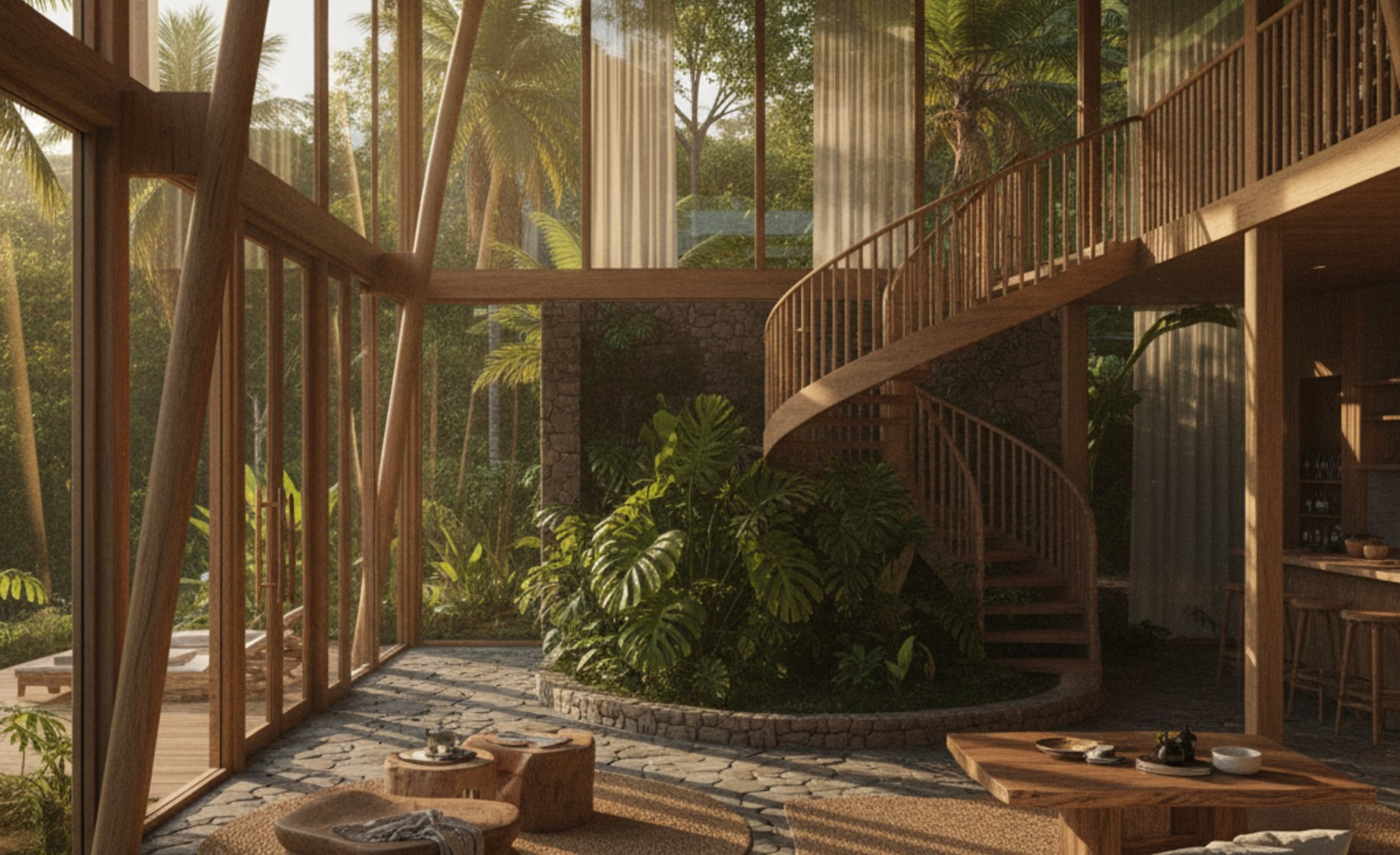
But why does it actually feel so good?
That profound sense of calm you feel in a space like this isn't just you being on vacation. It’s rooted in actual science. Studies have shown that interacting with nature, even just by looking at it, can significantly reduce cortisol, which is our body's primary stress hormone. A space with views of green landscapes has been linked to better concentration and mental recovery. Our brains are basically hardwired to respond positively to these cues. It taps into something primitive, a sort of memory in our reptilian brain from a time when we lived entirely in and among nature.
This is how it triggers that sense of peace. Peace is found in the subtle rhythms of the world, and biophilic design just brings those rhythms inside. It’s the ever changing play of light and shadow on a wall as the sun moves across the sky, the soft rustle of leaves just outside a window, or the panoramic view of a lush garden that greets you when you wake up. These constant, gentle connections to the outdoors create an environment that is inherently calming and grounds you in the present. It becomes easier to disconnect from the endless scrolling and the pinging notifications. You find a sense of flow, a feeling of being completely present and at peace.
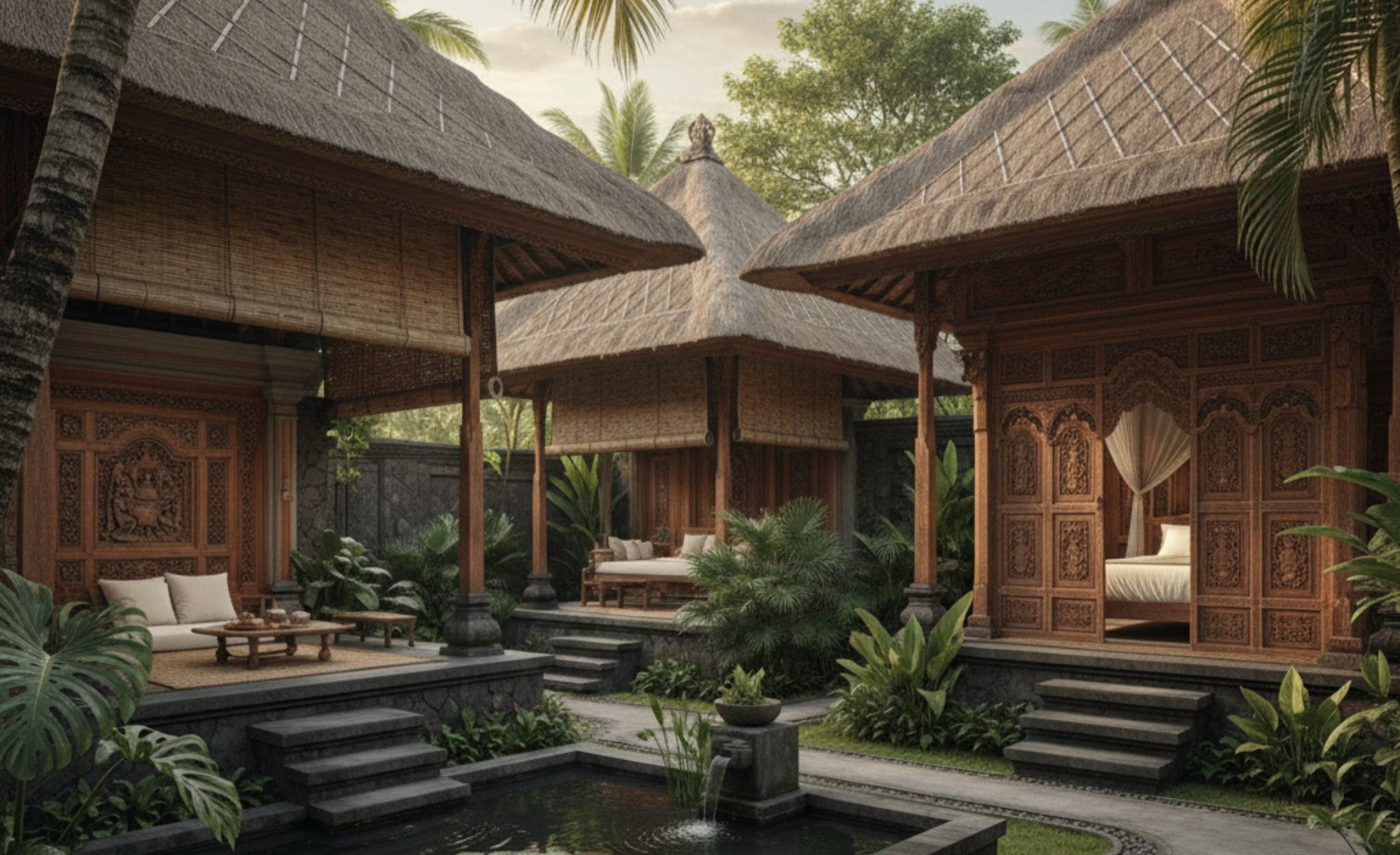
Our lost connection with the wild
There's a reason we're so drawn to this. It’s a concept called the "biophilia hypothesis," which is a fancy way of saying humans have an innate tendency to seek connections with nature and other forms of life. For pretty much all of human history, our survival and wellbeing were directly tied to our intimate understanding of the natural world. That connection is written into our DNA.
Modern life, for all its wonders, has tried its best to sever that bond. We’ve traded forests for concrete jungles and the sounds of birds for the hum of servers. Biophilic design feels less like a trend and more like a conscious act of reclamation. It’s a way to rekindle that lost spark, to weave the essential, life affirming patterns of nature back into our daily lives and, in doing so, reclaim a vital part of our own humanity.
Bali was doing this before it was cool
Honestly, long before biophilic design became a trendy term, the Balinese were mastering its principles. Traditional Balinese architecture is a living embodiment of the philosophy. Homes are often a collection of semi open air pavilions instead of one big, sealed box. This allows air, light, and life to flow freely. Local, natural materials are everything sustainably harvested bamboo, volcanic stone, intricately carved wood. These aren't just decorations; they are the soul of the structure, rooting it firmly in its environment.
This whole approach is guided by a profound local philosophy called Tri Hita Karana, which is all about maintaining harmony between the human world, the natural world, and the spiritual world. In architecture, this means designing homes that don’t dominate the landscape but coexist with it. Every element is placed with intention, to honor the surroundings and create a space that nurtures both body and spirit.
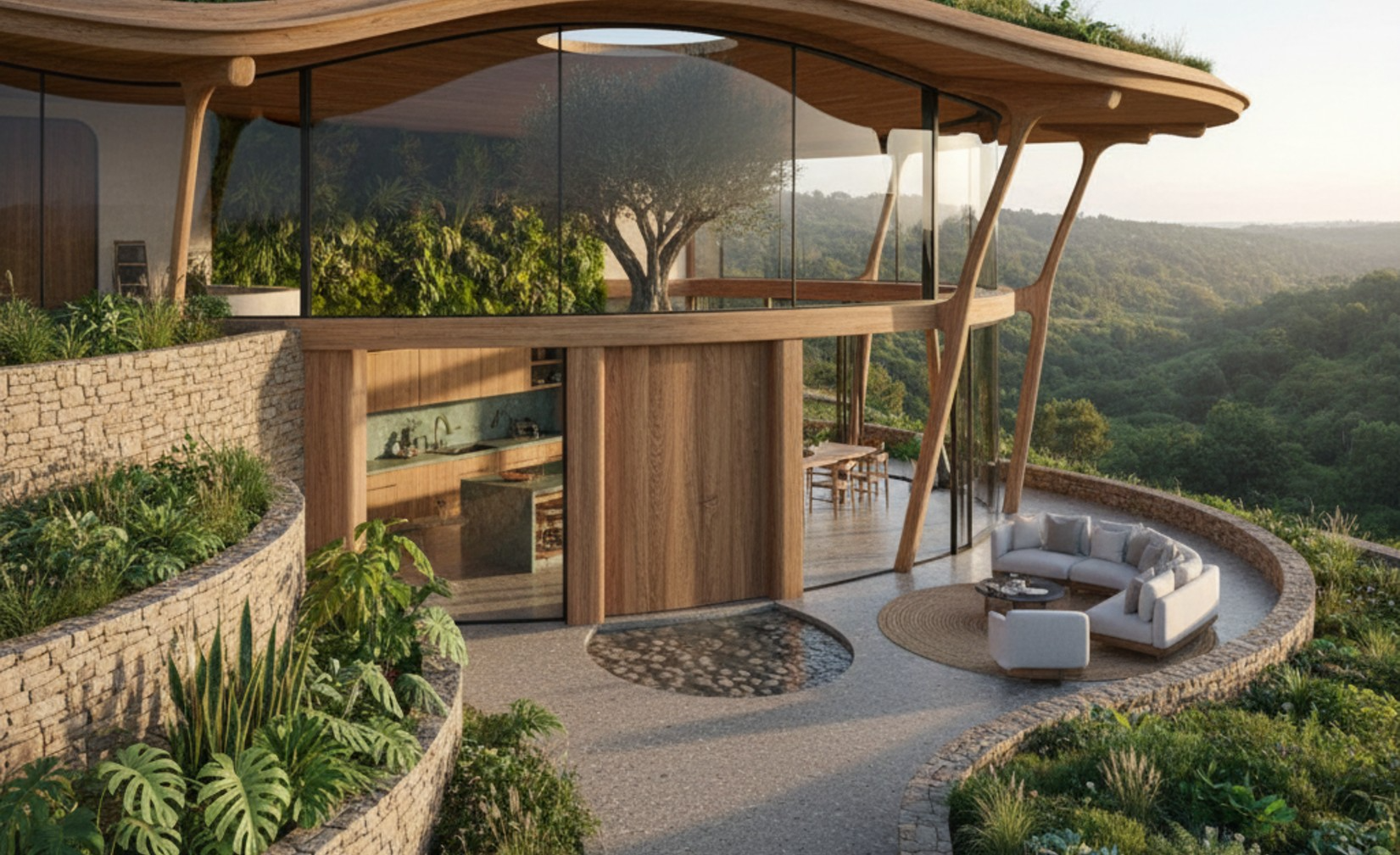
The modern tropical twist
Today’s most jaw dropping Bali villas are the next evolution of this ancient wisdom. They take the foundational principles of traditional Balinese design and merge them with the clean lines, expansive spaces, and, let’s be honest, the luxurious comforts of modern architecture. The result is this incredibly sophisticated and soulful interpretation of tropical living, where nature isn’t just a backdrop, it’s the main event.
You see it in these stunning features. Imagine entire walls of floor to ceiling glass that slide away, completely erasing the boundary between a chic living room and a verdant jungle ravine. Picture an infinity pool that seems to pour directly into the ocean beyond, or a rooftop garden where you can watch the sunset. These are spaces where indoor outdoor living isn't just a feature, it's the entire point. You live and breathe in a constant, intimate dialogue with the island’s insane natural beauty.
It’s not just a feeling, it’s an investment
Okay, let’s switch gears for a moment. Beyond the good vibes and the aesthetic appeal, there’s a really practical side to this. These villas are incredibly attractive on the market. In a place saturated with beautiful properties, biophilic villas offer something more. They offer an experience. People come to Bali to escape, to reconnect, to heal. A villa that literally brings nature to their doorstep? That’s a powerful selling point. Guests and buyers aren’t just getting a luxury home; they're getting a personal wellness sanctuary. This distinctiveness makes them stand out, commanding higher rental yields and attracting a clientele willing to pay a premium for that deeper connection. So while you’re creating a beautiful, healthy space, you’re also making a very savvy financial move.
So what's the bottom line
Ultimately, choosing a biophilic villa in Bali is about so much more than selecting a beautiful place to stay. It's a conscious lifestyle choice. It’s an opportunity to shed the layers of a hurried, disconnected world and step into an oasis of calm. It’s a return to what feels most intuitive, a space designed not just to house you, but to genuinely restore you. In the end, these homes offer a profound promise of peace the peace that comes from waking to the gentle light of dawn filtering through the trees, and the peace of feeling truly, deeply connected to the world around you. This is the magic of biophilic design, and it’s waiting for you here in the heart of Bali.
%20(1).jpg)
.jpg)
